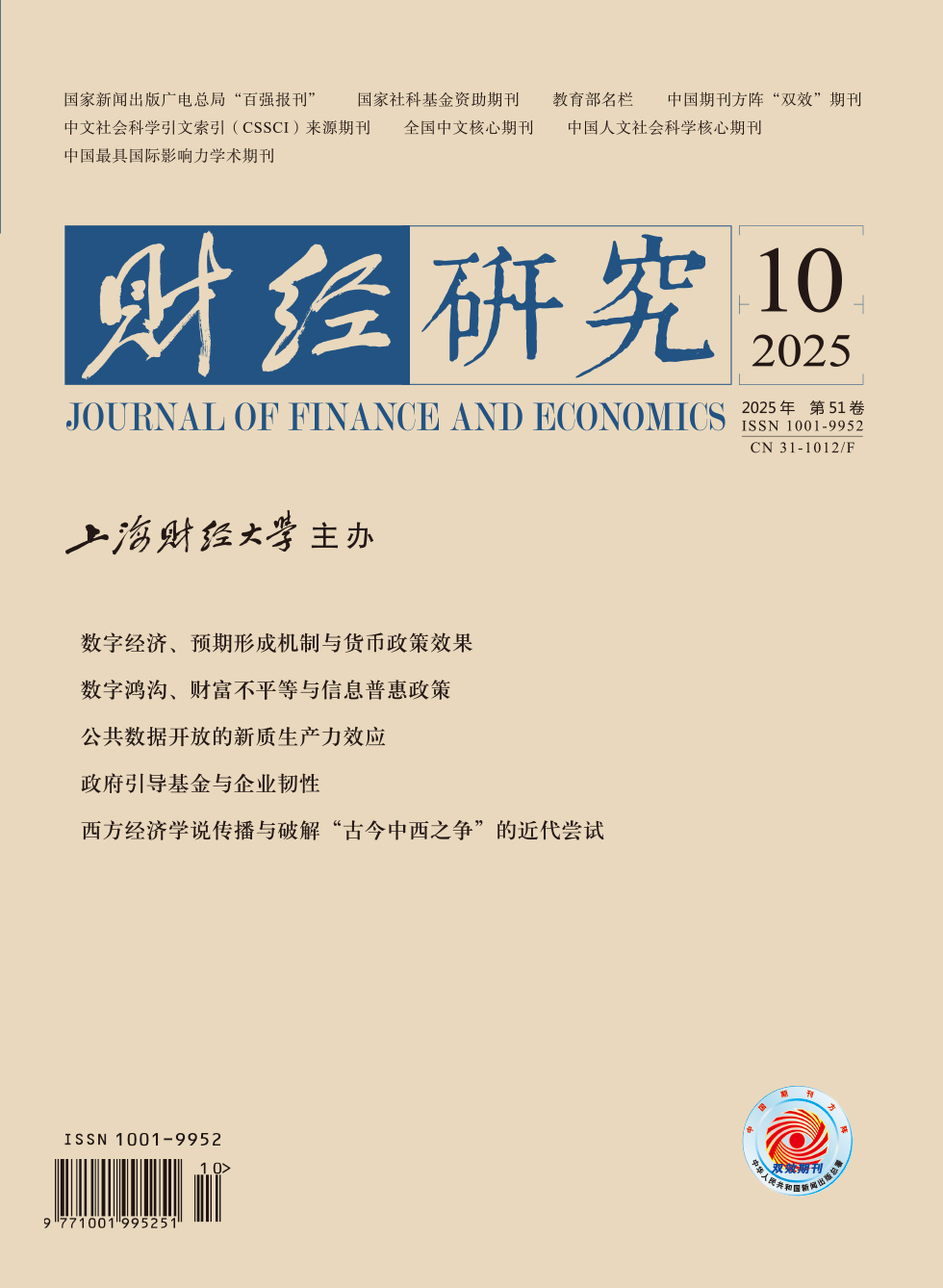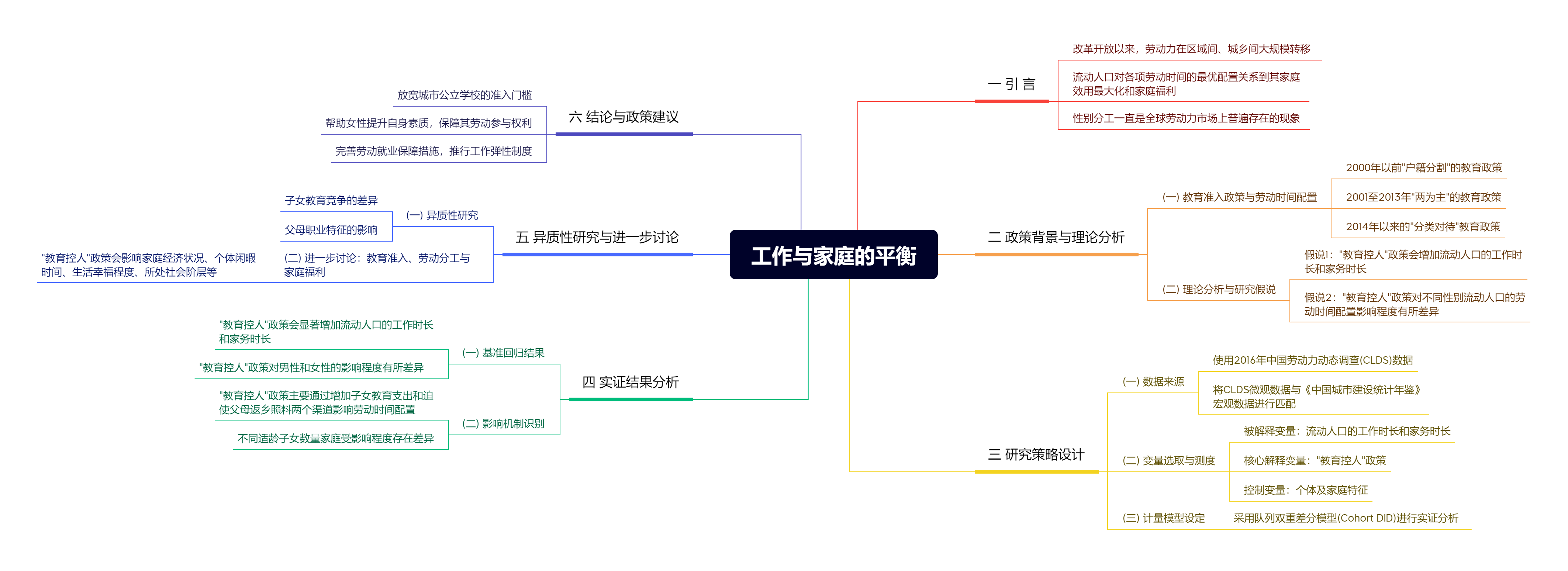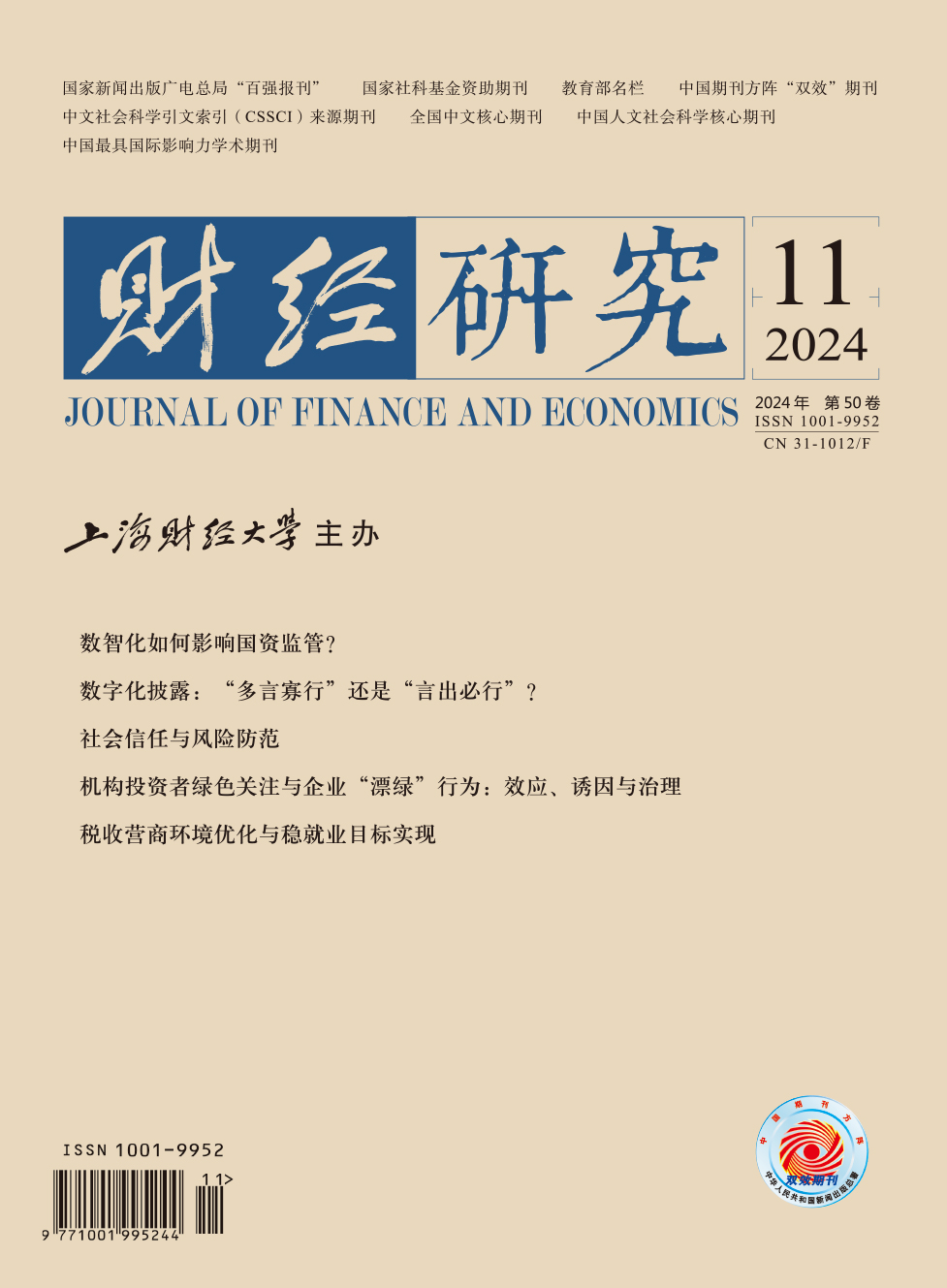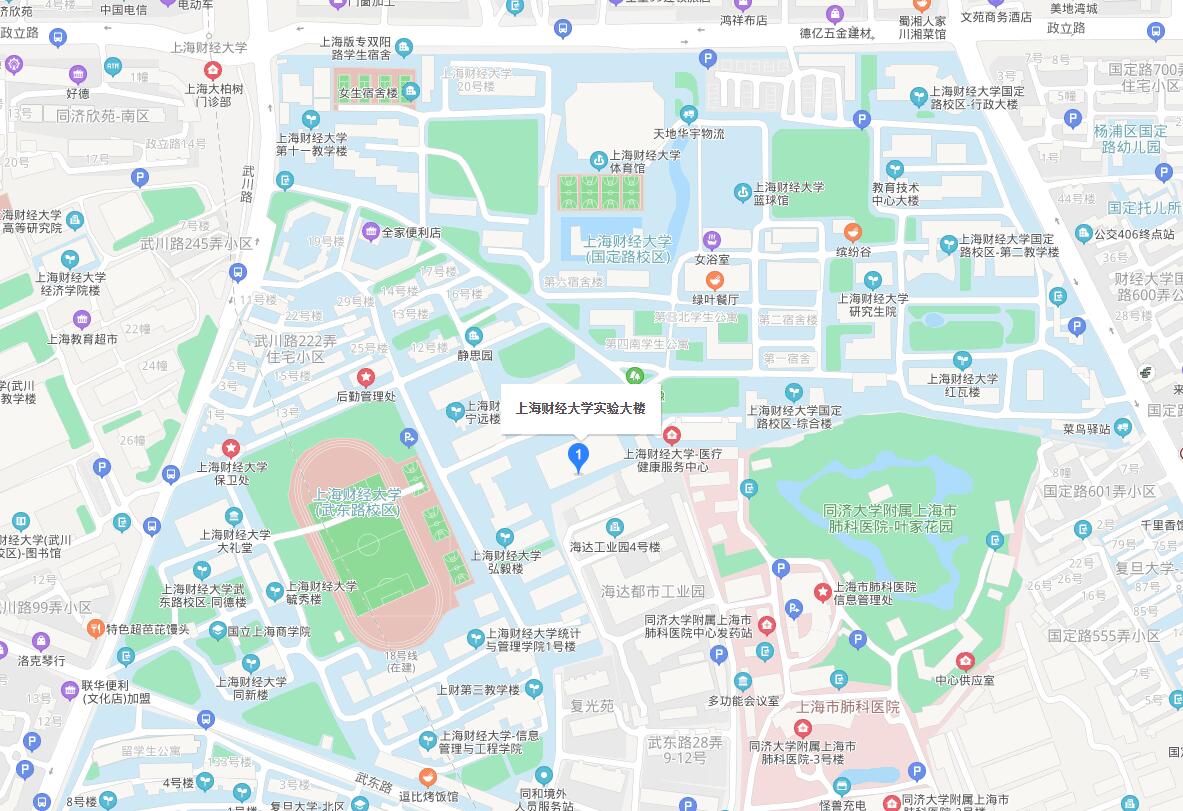调整城市多层级教育准入政策不仅直接提高随迁子女在流入地的教育公平程度,而且成为影响流动人口劳动分工和家庭福利的重要因素。文章通过匹配2016年中国劳动力动态调查数据和地级市宏观数据,采用队列双重差分模型,系统评估了“教育控人”政策对流动人口劳动时间配置和家庭性别分工的影响。研究发现:“教育控人”政策会显著增加流动人口的劳动时间,并且这种效应表现出一定程度的性别差异,其强化了“男主外、女主内”的性别分工模式。“教育控人”政策主要通过增加子女教育支出和迫使父母返乡照料两个渠道来影响流动人口的劳动时间配置,而子女教育竞争和父母职业特征均会对“教育控人”政策强化家庭性别分工的效应产生异质性影响。另外,教育准入政策会影响劳动时间配置,从而进一步影响家庭及其成员的福利水平。文章以优化子女教育准入政策为着力点,为流动人口平衡工作和家庭的关系,从而为促进社会公平发展提供了重要的政策启示。
工作与家庭的平衡——基于教育准入视角的流动人口性别分工
摘要
参考文献
相关附件
思维导图
1 陈璐,范红丽,赵娜,等. 家庭老年照料对女性劳动就业的影响研究[J]. 经济研究,2016,(3):176−189. DOI:10.3969/j.issn.1673-291X.2016.03.071
6 韩嘉玲. 相同的政策 不同的实践——北京、上海和广州流动儿童义务教育政策的比较研究(1996—2013)[J]. 北京工业大学学报(社会科学版),2017,(1):17−30. DOI:10.12120/bjutskxb20170117
9 李超,万海远,田志磊. 为教育而流动——随迁子女教育政策改革对农民工流动的影响[J]. 财贸经济,2018,(1):132−146. DOI:10.3969/j.issn.1002-8102.2018.01.009
10 梁文泉,钟瑞婷. 城市内的“孟母”:子女随迁如何影响母亲就业决策和性别收入差距?[J]. 经济学(季刊),2023,(5):2042−2060.
12 罗楚亮,滕阳川,李利英. 行业结构、性别歧视与性别工资差距[J]. 管理世界,2019,(8):58−68. DOI:10.3969/j.issn.1002-5502.2019.08.005
27 邹红,彭争呈,栾炳江. 隔代照料与女性劳动供给——兼析照料视角下全面二孩与延迟退休悖论[J]. 经济学动态,2018,(7):37−52.
28 Adda J,Dustmann C,Stevens K. The career costs of children[J]. Journal of Political Economy,2017,125(2):293−337. DOI:10.1086/690952
29 Afridi F,Li S X,Ren Y F. Social identity and inequality:The impact of China’s hukou system[J]. Journal of Public Economics,2015,123:17−29. DOI:10.1016/j.jpubeco.2014.12.011
30 An L,Qin Y,Wu J,et al. The local labor market effect of relaxing internal migration restrictions:Evidence from China[J]. Journal of Labor Economics,2024,42(1):161−200. DOI:10.1086/722620
32 Antonovics K,Town R. Are all the good men married? Uncovering the sources of the marital wage premium[J]. American Economic Review,2004,94(2):317−321. DOI:10.1257/0002828041301876
33 Baker M J,Jacobsen J P. Marriage,specialization,and the gender division of labor[J]. Journal of Labor Economics,2007,25(4):763−793. DOI:10.1086/522907
34 Becker G S,Murphy K M,Tamura R. Human capital,fertility,and economic growth[J]. Journal of Political Economy,1990,98(5):S12−S37. DOI:10.1086/261723
35 Becker G S. A theory of the allocation of time[J]. The Economic Journal,1965,75(299):493−517. DOI:10.2307/2228949
36 Chan K W,Buckingham W. Is China abolishing the Hukou system?[J]. The China Quarterly,2008,195:582−606. DOI:10.1017/S0305741008000787
37 Chen Y Y,Fu W. Migration control policy and parent-child separation among migrant families:Evidence from China[J]. Journal of Population Economics,2023,36(4):2347−2388. DOI:10.1007/s00148-023-00971-z
38 Fast J E,Williamson D L,Keating N C. The hidden costs of informal elder care[J]. Journal of Family and Economic Issues,1999,20(3):301−326. DOI:10.1023/A:1022909510229
39 Floro M S. Economic restructuring,gender and the allocation of time[J]. World Development,1995,23(11):1913−1929. DOI:10.1016/0305-750X(95)00092-Q
40 Killingsworth M R. Labor supply[M]. New York:Cambridge University Press,1983.
41 Lai F,Liu C F,Luo R F,et al. The education of China’s migrant children:The missing link in China’s education system[J]. International Journal of Educational Development,2014,37:68−77. DOI:10.1016/j.ijedudev.2013.11.006
引用本文
龚钰涵, 张锦华. 工作与家庭的平衡——基于教育准入视角的流动人口性别分工[J]. 财经研究, 2024, 50(11): 155-169.
导出参考文献,格式为:





 3616
3616  6574
6574


